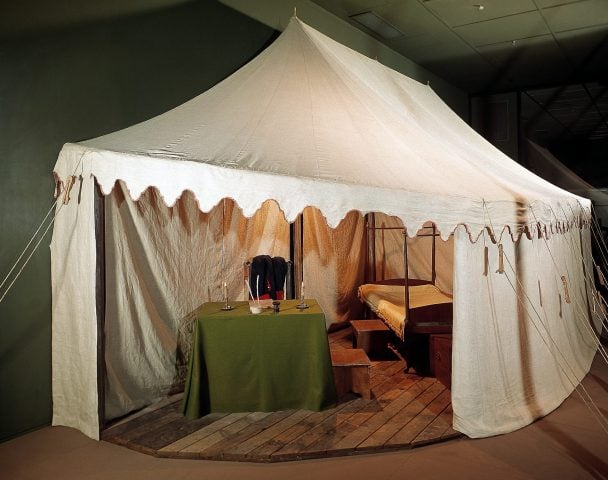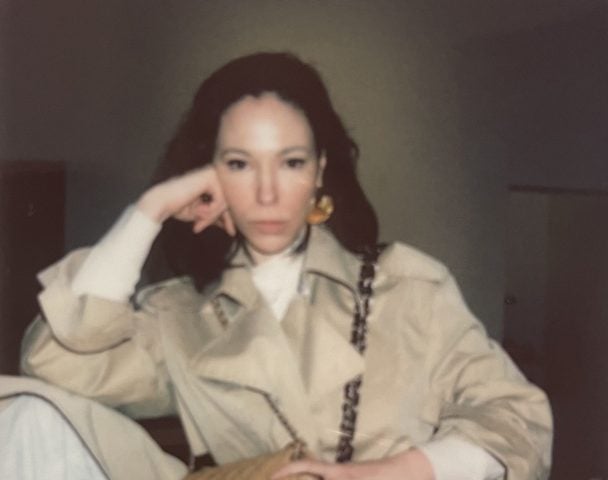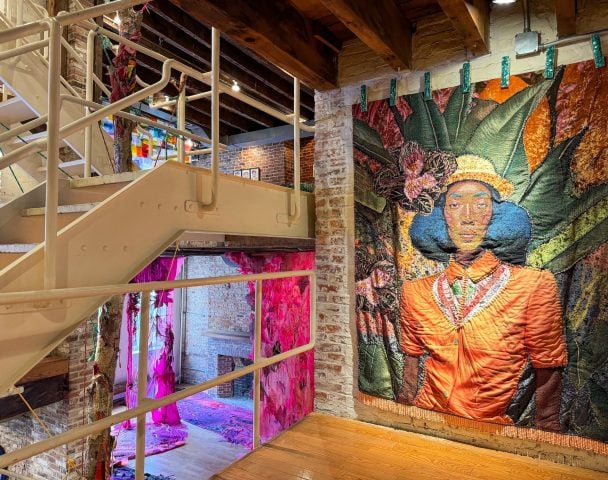The latest run of socially distanced mostly online evening sales reached its peak this evening when Picasso’s Femme assise près d’une fenêtre (Marie-Thérèse) (1932) sold to a client on the phone with Christie’s specialist Vanessa Fusco for $103.4 million after a protracted bidding war with her colleague Max Carter.
Offered as part of the $481.1 million Christie’s 20th-century evening auction (the hammer total was $414.4 million), it was a shocking display of bravura in the sales room, as the $90 million hammer on the Picasso incinerated the presale estimate of $55 million. (Unless otherwise stated, final prices include auction-house fees; presale estimates do not.)
The sale’s buyers, according to the auction house, were mostly from the U.S., with 60 percent of the winning bids coming in from the States. The rest came from the Asia Pacific market (20 percent) and Europe, the Middle East, and Africa (ditto).
But no one was actually in the salesroom—that cathedral devoted to the dueling faiths of art and commerce was empty apart from a few essential staffers, and the proceedings were instead streamed on the screens of art-market rubberneckers the world over.
(This may be the last time collectors and dealers are forced to watch the sales glued to their phones instead of nestled into their seats at Rockefeller Center, given what the C.D.C. is now saying about vaccinations and masks.)
The sale’s total easily beat out its presale estimate of $345 million with a sell-through rate by lot at an impressive 97 percent (though one lot was pulled prior to the sale). Sixteen of the 49 offered works carried guarantees.
And while impressive, the Picasso just missed setting a new record for a portrait of his favorite muse, Marie-Thérèse Walther, not quite beating out the $106 million sale of Nude, Greene Leaves, and Bust (1932) at Christie’s in 2010.
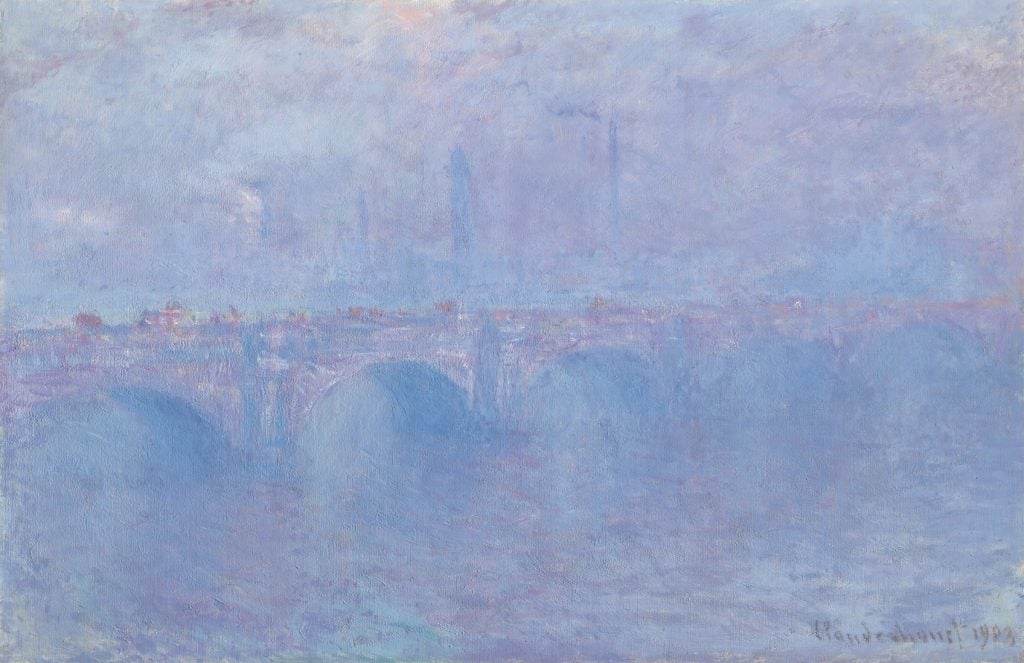
Claude Monet, Waterloo Bridge effet de brouillard (1899–1903). Courtesy of Christie’s Images, Ltd.
Among the other big lots was Claude Monet’s Waterloo Bridge, effet de brouillard, which hammered at $42 million for a full price of $48.5 million, captured by a client on the phone with Maria Los. Meanwhile, Vincent van Gogh’s Le Pont de Trinquetaille (1888) sold to a client on the phone with Conor Jordan for a hammer price of $34 million, or $37.4 million with fees. And an untitled Rothko from the last year of his life hammered at $33 million, selling to a client on the phone with Alex Rotter. With fees it was $38.2 million.
It was the end of a week that was successful enough to prove to anyone who otherwise hasn’t been paying attention that the rich have gotten much richer, and now can play with all that extra dinero sloshing around in their coffers. Sotheby’s pulled in $597 million during its run of sales Wednesday, and Christie’s took in $691.6 between its two evening sales Tuesday and Thursday. All together, it’s a total of $1.29 billion.
That’s right folks, we’ve got ourselves a gigaweek.
But some things have changed in our new post-pandemic era. Artists of color are now—finally, rightfully—not just in evening sales, but are the best parts of the sales, and their works are often the highest quality ones on offer among what is often a laundry list of the same stuff.
At the same time, market stalwarts of the past—Christopher Wool, Cy Twombly Jeff Koons—seem wounded, but bidders go wild for stunt-y works by Banksy. Obviously, NFTs were not a thing when the world shut down in March 2020, and now they are… siiiiiigh… very much a thing.
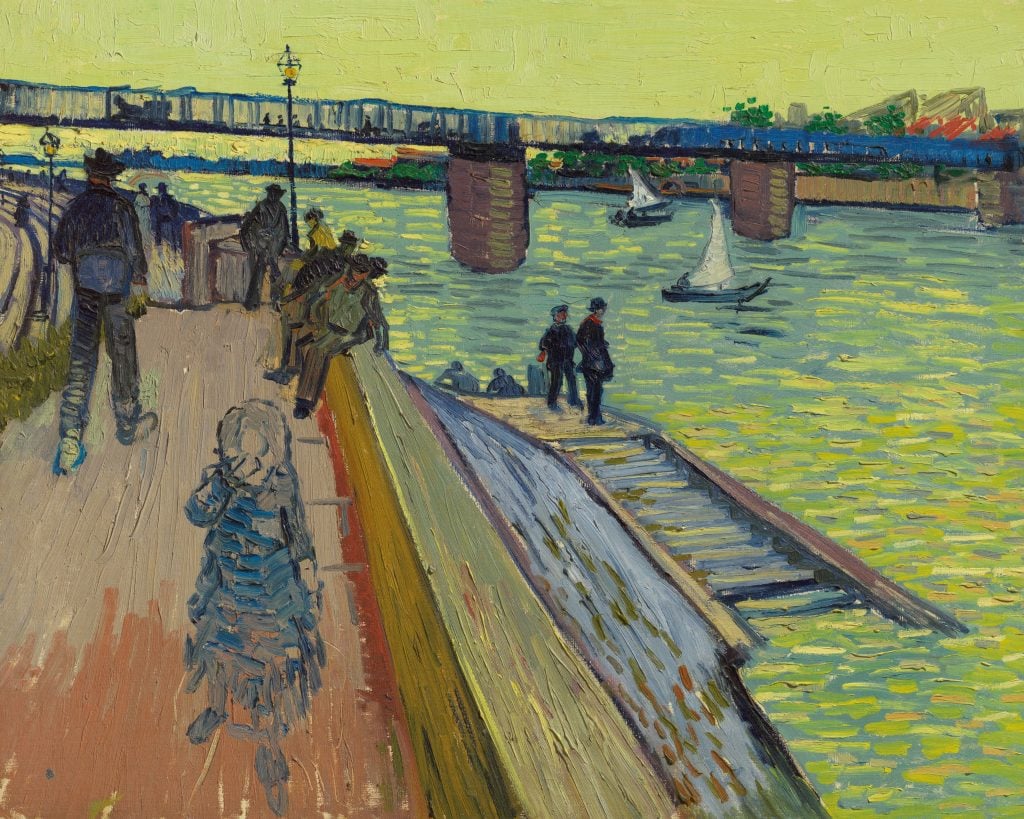
Vincent Van Gogh, Le Pont de Trinquetaille (1888). Courtesy of Christie’s Images, Ltd.
Even the stodgy Imp-Mod sale has gotten a remix at Christie’s. Instead of lumping all the Post-war inventory with work made as recently as a few years ago, the Francois Pinault-owned house created a new sale that spans from the 1880s to the 1980s.
You get all the old-world French dudes, but you also get artists like Alice Neel. Her masterful painting, Dr. Finger’s Waiting Room, sold for $3 million, a new record for the artist, perhaps buoyed by the acclaimed show on view at the Met in New York.
That also means that Warhol, long a favorite of the Postwar arena, gets to hold his own against the pre-Pop gods he both adored and raged against. Andy fared well in this fair format’s maiden voyage, despite the Warhol market being a little weak at the moment.
Nine Multicolored Marilyns hammered to $8.6 million to Christie’s global president Jussi Pylkkanen—on the rostrum instead of presiding gavel-in-hand at the podium—just above the $8.5 million high estimate. Two Marilyns (Double Marilyn) hammered at $13.5 million, short of the high estimate but still a respectable $15.8 million with fees.
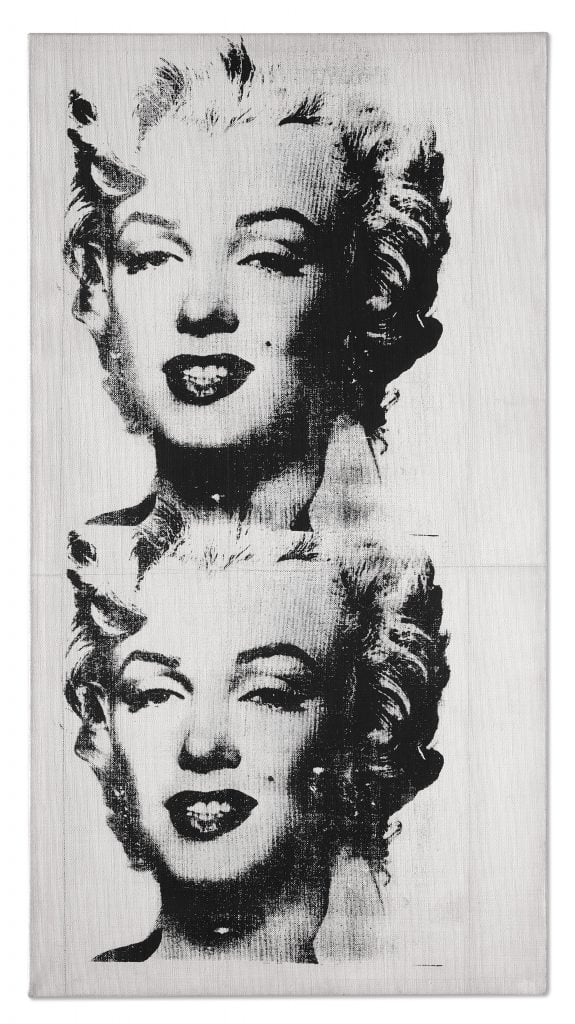
Andy Warhol, Two Marilyns (Double Marilyn) (1962). Courtesy of Christie’s Images, Ltd.
Other fireworks exploded as Willem de Kooning’s East Hampton IV sold for a hammer price of $8.8 million, well above a $6 high estimate. A Seuret study with a $8 million high estimate hammered at $11.2 million. And a work by Wayne Thiebaud—one of the few living artists in the sale—was estimated to sell for a high of $1.8 million. But feverish bidding pushed it to a $7.1 million hammer, or $8.5 million with fees.
There was also a record set for the artist Grace Hartigan: slotted in at the coveted second position, The Phoenix (1962) hammered at $550,000, or $687,500 with fees. Other records were set for works by Barbara Hepworth and Alighiero Boetti.
But in many ways, the sale seemed a bit deflated apart from the blockbuster bidding surrounding the Marie-Thérèse, even as auctioneer Adrien Meyer tried to keep the proceedings chipper as we entered hour three. The Rothko went to the guarantor on a single bid through Alex Rotter for a hammer price of $33 million—it was estimated to sell for $40 million, and in fact was sold for $39.9 million at Sotheby’s in 2014. (The buyers then, and consignor tonight, were Sasan and Yassmin Ghandehari.) A Mondrian estimated at $25 million hammered on a single bid at $24 million.
And the Roy Lichtenstein that was consigned by Larry Gagosian hammered at $19.5 million, notably below the $20 million low estimate, to a single bid from a client on the phone with Barrett White. While the old stalwarts will always be here, Gagosian might have to find some new artists if he wants to sell at a large profit.
Follow Artnet News on Facebook:
Want to stay ahead of the art world? Subscribe to our newsletter to get the breaking news, eye-opening interviews, and incisive critical takes that drive the conversation forward.







